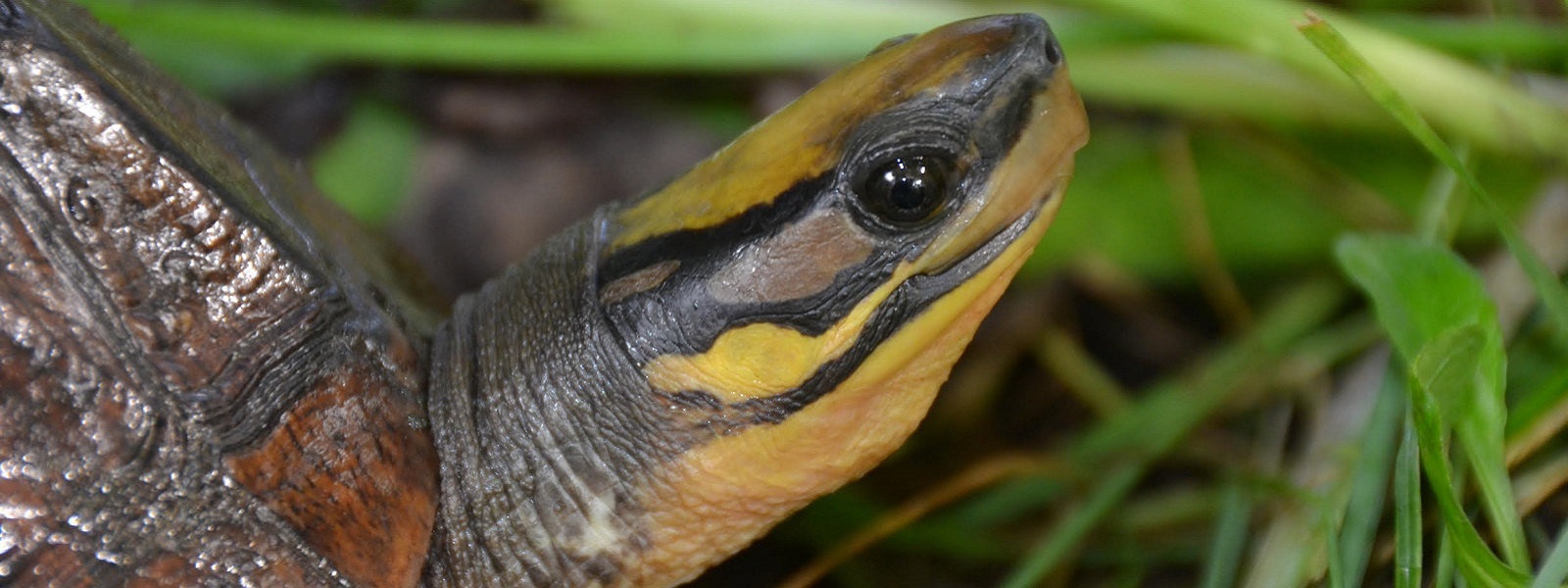Conservation Actions
Cuora trifasciata is included in CITES Appendix II since 2000, allowing international commercial trade in the species provided such trade is not detrimental to the species, and subject to national trade legislation.
Under the People’s Republic of China Wild Animals Protection Law (1989), C. trifasciata is listed as a National Protected Wild Animal Category II, meaning that collection is only allowed for scientific research, captive-breeding, exhibition and other special reasons, and permission is required from the Forestry or Fisheries Department in the provincial government. The species is protected in Hong Kong by the Wild Animals Protection Ordinance, which prevents the collection, removal, destruction, disturbance and possession of any wild turtle or possession of any hunting or trapping equipment (Lau et al. 2000).
Hong Kong’s Agriculture, Fisheries and Conservation Division, in collaboration with Kadoorie Farm and Botanic Garden, has implemented a comprehensive conservation program for the species in Hong Kong for many years.
Due to the extremely high value of the species and the fact that it is almost extinct in the wild, in situ conservation efforts would have low success probability. Therefore, ex situ conservation is highly recommended. Engaging the commercial farming sector to maintain pure genotype lineages and eventually contribute to the survival of the species in the wild is recommended.
Location Information
The historic distribution of Cuora trifasciata in southern China was from Guangxi through Guangdong to Fujian, as well as Hainan and Hong Kong. The current distribution of C. trifasciata is only Hong Kong and Hainan province in China. The Hong Kong subpopulation may have been introduced through trade. It was previously considered to occur in northern Viet Nam, but those records are now considered as the species C. cyclornata.
Geographic Range
Extant
China, Hong Kong
Population Information
Historically Cuora trifasciata was probably fairly common in suitable habitat, but any remaining subpopulations have been reduced to scattered individuals in recent years as a result of collection, with the species probably being extinct in the wild across most of its range. Based on this, it is suspected that the population of this species has been reduced by over 95% in the past three generations.
Threats
Cuora trifasciata has traditionally been impacted by modest levels of subsistence consumption, collection for the international pet trade, and habitat impacts including stream alteration for irrigation water and power supply and destruction and degradation of hill forests flanking its stream habitats, leading to increased erosion and siltation.
In the 1980s, a jelly extract from the species was widely believed to be an effective cure for cancer, instantly leading to a vastly increased demand for the species, with single animals reaching high economic values (valued at over 1,000 USD by the year 2000). The value of individuals varies depending on origin and sex, with wild males being the most expensive ones. Commercial farming of the species has been underway for several decades now and produces great numbers of captive-bred offspring. There remains an extreme demand for wild-collected animals as additional founder stock for the aquaculture industry, and illegal collection pressure on the last remaining wild animals remains exceptionally high.
Partners
IUCN Red List Account Link
Please click here to see the species' IUCN Red List Account page.Photo Credits
Roland Wirth (category image)
Torsten Blanck (featured image)







